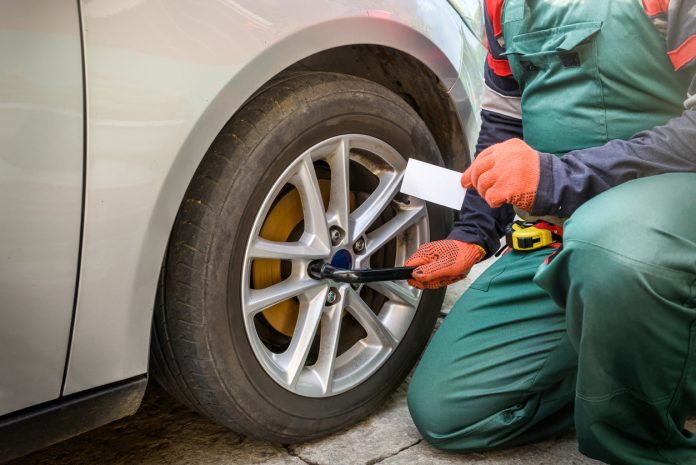As summer slowly passes behind us, the last of the four annual CVSA safety blitzes draws nearer. This year’s blitz, from August 20 through August 26, will focus on air brake systems. The top items they will be looking at are brake adjustment, any air leaks (audible or otherwise), wear and tear of the braking components (shoes, drums, discs, and pads), operation of the compressor and air dryer, and operation of the governor.
Checking and testing the operation of all these components on a daily basis is not only a good habit to get into, but it is also a legally required part of your daily pre-trip inspection. Start by using the lanyards to drain all the air and moisture from all three air tanks on the truck, as well as all the air tanks on the trailer. The trailer will have at least two tanks, but may have as many as six depending on the axle configuration. Once all the tanks are drained, start the truck and allow the compressor to build pressure in all the tanks. While this is being done, you can walk around the unit checking lights, fifth wheel, axle slider pins, tire pressure, load securement, door seals, visually checking the condition of the brake shoes and drums, or brake pads and discs if you have disc brakes.
Once the system pressure reaches about 90 PSI, open the tractor protection valve to supply air to the trailer. It will take a while to fully charge the trailer, so you can use this time to verify the proper operation of the windshield wipers and washer system, and the operation of the air horn. When both the truck and trailer systems are fully charged, the governor will move the compressor from “loaded” to “unloaded”, which is easily detected by an audible “PISHHHH”, and sometimes you can see a small dust cloud emerge from under the truck near the compressor. We have now verified the proper operation of the governor, which prevents the air system from overpressure.
Release the parking brakes and shut off the truck. Turn the key back to the “on” position, but do not start the engine, and apply six full pressure brake applications by pressing the brake pedal all the way to the floor, hold it for one second, and release it. Each application should show at least 80 PSI on your brake application gauge. These applications will cause the automatic slack adjusters to self-adjust your brakes to the proper adjustment. A later article will deal with the differences between manual and automatic brake adjusters. Suffice it to say, chances are you won’t find any manual adjusters, as all new trailers were required to have automatic adjusters as of June 1, 1996, but there may be a few manual adjusters still in service.
Start the engine and allow the compressor to rebuild the air pressure until the maximum system pressure is reached. Maximum pressure should be between 120 and 140 PSI. Shut off the engine and turn the key “on” again without starting the engine. Apply a full pressure brake application and hold it for at least one minute while watching the pressure in both the primary and secondary gauges. The available pressure should drop about 10 PSI, then stop. If it continues to slowly drop, then you have an air leak somewhere in the system, and you need to have it repaired before driving. If the system checks out, pump the pressure down by pressing and releasing the brake pedal repeatedly. The low air warning audible alarm and warning light in the air gauge should activate when the system pressure drops approximately 30 PSI. Continue pumping the brakes until the tractor protection valve pops at approximately 60 PSI. Again, if neither the low air warning alarm sounds nor the tractor protection valve activates properly, or if the parking brakes apply before the tractor protection valve, the system must be repaired before you drive the vehicle.
Now you can restart the engine and bring the idle up to about 1200 RPMs and time how long it takes the compressor to rebuild full system pressure. It should take two minutes or less for a five-axle unit and seven minutes or less for a set of super Bs. If it takes any longer, then the compressor may need to be replaced. If everything checks out, then you are most likely good to go.
As stated above, it’s a good idea to get into the habit of checking the operation of your brakes on a daily basis. Too many accidents have been caused and lives lost by brakes that are out of adjustment.



















